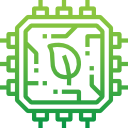
Integration of Renewable Energy in Smart Homes
The integration of renewable energy sources into smart homes is transforming the landscape of modern living. By combining advanced technology with sustainable energy solutions, homeowners can achieve greater efficiency, cost savings, and environmental benefits. Smart homes equipped with renewable energy systems such as solar panels, intelligent battery storage, and sophisticated energy management platforms are at the forefront of a global push towards greener living. As technologies evolve and become more accessible, the synergy between smart home automation and renewable energy is unlocking new possibilities for energy independence and responsible consumption.
The Rise of Renewable Energy Solutions in Homes
Evolution of Residential Solar Power
Residential solar power systems have undergone significant evolution, shifting from bulky, inefficient panels to sleek, highly efficient integrated solutions. Early adopters often faced hurdles such as complicated installations and limited output, but modern solar technologies offer streamlined integration into roofs and even building materials. With the development of more efficient photovoltaic cells and smarter inverters, solar panels can now generate more electricity from less sunlight. Additionally, net metering programs and falling production costs have made solar energy a viable and attractive investment for a much broader segment of homeowners, leading to widespread installations across various climates and regions.
Wind and Other Emerging Technologies
Beyond solar, wind energy is gradually finding its place in residential applications through small-scale turbines tailored for home use. Although wind energy adoption is more site-specific, advances in turbine design and noise reduction are making them feasible for use in suburban and even some urban settings. Other emerging renewable technologies, such as micro-hydropower and geothermal heat pumps, are also being integrated into smart homes, providing unique solutions tailored to local environmental conditions. These newer technologies complement solar and wind systems, enabling households to diversify their energy sources and further reduce their reliance on traditional power grids.
Government Incentives and Consumer Demand
Government incentives have played a crucial role in accelerating the adoption of renewable energy in smart homes. Tax credits, rebates, and feed-in tariffs reduce the up-front cost and improve the return on investment for homeowners. As climate consciousness grows, consumer demand for sustainable solutions continues to rise, prompting manufacturers to innovate and expand their offerings. The result is a favorable market environment where renewable energy technologies are not only accessible but often preferable to conventional energy sources, catalyzing further adoption and innovation in the sector.
Smart Home Technology and Energy Management
Energy Management Systems (EMS)
Energy Management Systems (EMS) are the central hub of a smart home’s renewable energy strategy. They monitor and control energy generation, storage, and usage in real time, ensuring that renewable sources are utilized to their maximum potential. EMS platforms interface with sensors, smart meters, and connected appliances, making data-driven decisions about when to store energy, when to draw from the grid, and how best to balance loads. By responding dynamically to changes in weather, occupancy, and energy pricing, EMS solutions not only increase efficiency but also take the complexity out of managing a multi-source energy ecosystem for homeowners.
Intelligent Appliances and Device Automation
Modern smart homes are outfitted with intelligent appliances that communicate with both the homeowner and the broader energy network. Devices like smart thermostats, connected lighting, and automated blinds adjust their operation in response to signals from the EMS or directly based on generation data from renewable sources. This allows energy-hungry appliances like washing machines and dishwashers to run during peak solar production hours, for instance. The result is a harmonious system where the use of renewables is prioritized without sacrificing convenience or comfort, making sustainability both effortless and effective.
Real-Time Monitoring and Remote Control
One of the hallmarks of a smart home integrated with renewables is the capacity for real-time monitoring and remote control. Through smartphone apps and web interfaces, homeowners gain complete visibility into their energy production and consumption patterns at any moment. Minor inefficiencies or abnormal patterns can be detected early and corrected instantly, preventing energy waste. Moreover, remote access enables homeowners to make adjustments—such as pre-cooling their home or charging an electric vehicle at optimal times—regardless of their location, ensuring their renewable systems are always operating to their fullest potential.

The financial advantages of smart homes with integrated renewables are substantial. By generating electricity onsite, homeowners can significantly reduce their monthly utility bills and protect themselves from rising energy costs. Intelligent energy management further amplifies these savings by automating consumption during low-tariff periods or maximizing self-consumption of solar or wind-generated power. Coupled with government incentives, rebates, and net metering programs, the effective payback period for renewable investments is continuously decreasing, making the shift to a smart, sustainable home an economically sound decision.

Renewable energy integration enhances energy independence by reducing reliance on centralized grids and vulnerable energy infrastructure. In the event of blackouts or grid instability, homes with solar panels and energy storage can maintain critical operations uninterrupted. Smart energy management ensures that stored energy is allocated where it’s most needed, and intelligent load prioritization distinguishes between essential and non-essential appliances. This additional layer of resilience is especially crucial in regions prone to extreme weather or frequent power outages, empowering homeowners to safeguard their comfort and security.

Perhaps the most compelling benefit of marrying renewables with smart home systems is the positive impact on the environment. By shifting to clean energy sources, households contribute to the reduction of greenhouse gas emissions and the fight against climate change. Automated energy optimization reduces overall consumption, mitigates peak demand, and encourages a culture of conscious resource use. Over time, the widespread adoption of renewable-powered smart homes can drive significant progress towards global sustainability goals, proving that individual action can contribute to collective environmental stewardship.
Join our mailing list
